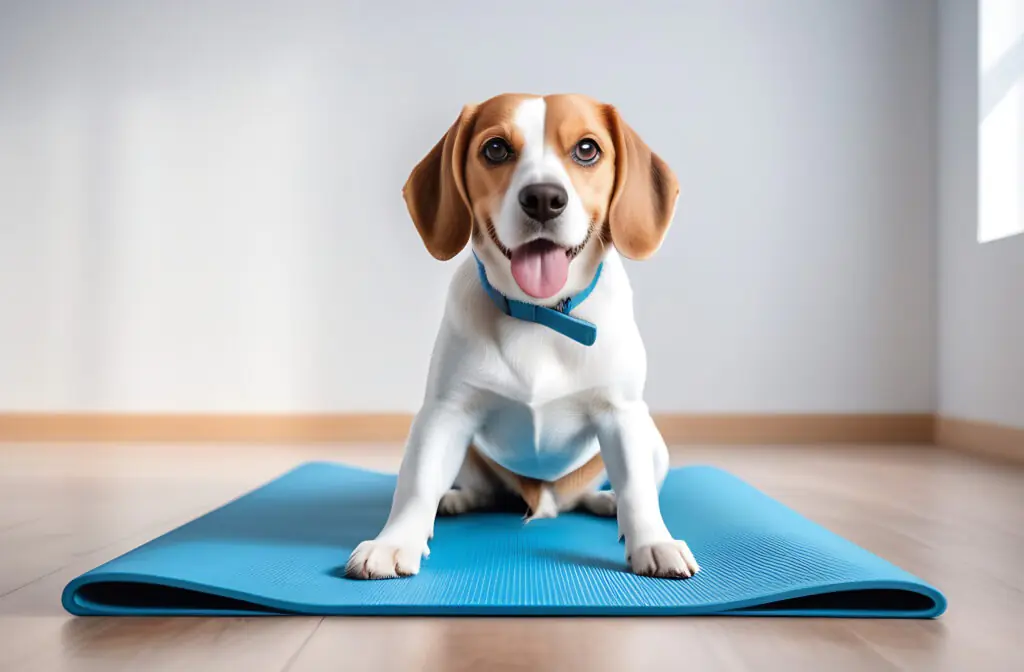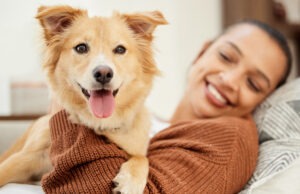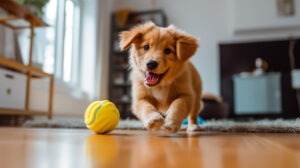
How To Keep Your Dog entertained when kept inside- Indoor exercise tips for dogs
The weather can’t make its mind up. From thunderstorms to heatwaves, we’ve had a years’ worth of climates in just a few weeks.
When the next heatwave strikes, one of the best things you can do for your pooch is keep them inside during the hottest times of the day. Most dog owners will know, though, that this isn’t always an easy feat! If you’re wondering how to keep your furry friend active and happy indoors, take a look at our indoor exercise tips for dogs.
Whether your dog is a high-energy breed or a laid-back couch potato, we’ve got you covered. So, let’s dive in and discover how to turn your home into a fun and stimulating indoor dog gym!
Understanding Your Dog’s Indoor Exercise Needs
Just like us humans, your dog needs regular exercise to stay happy and healthy. But when you’re keeping them indoors for a specific reason, meeting their exercise needs can be a bit tricky.
Different dogs have different exercise needs. Factors like breed, age, health, and temperament all play a role.
For instance, a young, active breed like a Border Collie will need more exercise than more relaxed breeds like Basset Hounds. Similarly, a puppy will have more energy to burn off than an older dog.
Understanding your dog’s unique exercise needs is the first step towards creating an effective indoor exercise routine. It’s all about finding the right balance that keeps your dog physically fit and mentally stimulated without causing overexertion.
Overcoming Indoor Exercise Challenges
Getting your dog to exercise indoors presents some unique challenges such as space constraints, lack of natural stimuli, and potential hazards can all make indoor exercise a bit tricky.
But with a bit of creativity and planning, you can overcome these challenges. The key is to create a safe, stimulating environment that caters to your dog’s physical and mental needs.
Remember, indoor exercise is not a replacement for outdoor activities. But it can be a great supplement, especially during rainy or warm weather, or when outdoor access is limited.
Creating a safe exercise space at home
Creating a safe space for indoor exercise is crucial. This space should be free of hazards like sharp objects, toxic plants, or small items that your dog could swallow.
Consider using a spare room, hallway, or a section of your living room for this purpose. Make sure the floor is non-slip to prevent injuries. You can also use baby gates or pet playpens to create a safe, contained area for your dog to play in.
Balancing energy levels and exercise intensity
Balancing your dog’s energy levels with the right exercise intensity is crucial. Too little exercise, and your dog may become restless. Too much, and they could end up injured.
Start with short, gentle exercise sessions, and gradually increase the intensity as your dog gets used to the routine. Don’t forget to monitor them throughout, and if they seem tired, are panting more than normal, or getting reluctant to continue, let them take a break. Remember, the goal is to keep your dog active and happy, not to exhaust them.
Fun and Engaging Indoor Dog Exercises
Indoor exercises can be just as fun and engaging as outdoor ones. The key is to find activities that stimulate your dog both physically and mentally.
Interactive games, training sessions, and DIY obstacle courses are all great options. They not only keep your dog active, but also help strengthen your bond with them. Remember, the goal is not just to tire your dog out, but to provide them with a fun, enriching experience.
Interactive games for mental and physical stimulation
Interactive games are a great way to keep your dog mentally stimulated while also providing physical exercise. These games can range from simple fetch and tug-of-war games to more complex activities like hide-and-seek or scent-based games.
Here are a few ideas to get you started:
- Hide-and-seek: Hide treats or toys around the house and let your dog find them. This game not only provides physical exercise but also stimulates your dog’s sense of smell.
- Tug-of-war: This game is great for physical exercise and can also help to teach your dog impulse control and can be done using different toys.
- Fetch: Even if you don’t have a lot of space, a short game of fetch can be a great way to get your dog moving.
Training sessions as exercise
Training sessions can also serve as a form of exercise. Teaching your dog new tricks or commands not only provides mental stimulation but also helps to keep them physically active.
Remember to keep training sessions short and fun. Use positive reinforcement, like treats or praise, to reward your dog for their efforts.
Training sessions can also be a great opportunity to work on your dog’s behaviour. For example, if your dog tends to jump on furniture, you can use training sessions to teach them to stay off. That way, you’re giving them their daily exercise, and making both your lives easier, too.
DIY indoor obstacle courses
Setting up a DIY obstacle course is another fun and engaging way to exercise your dog indoors. You can use household items like chairs, boxes, or blankets to create a course for your dog to navigate.
Start with a simple course and gradually make it more complex as your dog gets the hang of it. Always supervise your dog while they’re using the obstacle course to ensure their safety.
Indoor Dog Exercise Equipment
While many indoor exercises can be done without any special equipment, having a few key items can make your DIY dog gym more versatile.
Exercise equipment can provide additional physical challenges and mental stimulation for your dog. It can also help to vary your dog’s exercise routine, keeping them engaged and interested.
Remember, safety should always be your top priority when using any exercise equipment with your dog.
Essential items for your indoor dog gym
There are a few items that can be particularly useful for indoor dog exercises. These include interactive toys, treat-dispensing items, and dog-specific exercise equipment like treadmills or agility sets.
Interactive toys can keep your dog entertained for hours, providing both physical exercise and mental stimulation. They require your dog to solve puzzles or complete tasks, providing mental and physical stimulation. Treat-dispensing toys, on the other hand, can make mealtime more active and engaging.
Dog-specific exercise equipment can provide a more intense workout for your dog. However, they should always be used under supervision and with proper training to ensure your dog’s safety. This can include things as simple as agility sets and doggy yoga mats. Now that’s zen.
Establishing An Indoor Exercise Routine
Establishing a consistent indoor exercise routine is key to keeping your dog healthy and happy.
This routine should be tailored to your dog’s breed, age, and energy level. It should also consider any health issues your dog may have. Keep reading for some of our top tips and tricks:
- Consistency and variety: Whilst consistency is important, so is variety. Offering a variety of activities prevents boredom, providing a more balanced workout, targeting different muscle groups and training skills.
- Monitoring health and progress: Monitoring your dog’s health and progress is an essential part of indoor exercise routines. Keep an eye on their weight, energy levels, and behaviour. Regular vet check-ups can help tailor your dog’s routine for their specific needs, too.
Keeping your dog exercised indoors can be a fun and rewarding experience for both of you. It not only helps maintain their physical health but also stimulates their mind and strengthens your bond.
Remember, every dog is unique. What works for one might not work for another. So, be patient, keep experimenting, and find what activities your dog enjoys the most.
In the end, a well-exercised dog is a happy dog. And a happy dog makes for a happy home. So, embrace the challenge of indoor exercise and enjoy the journey with your furry friend.

What exercise routines do you do with your pet? We’d love to hear from you on Instagram or Facebook. For more pet advice from our Pointer experts, visit our blog.


